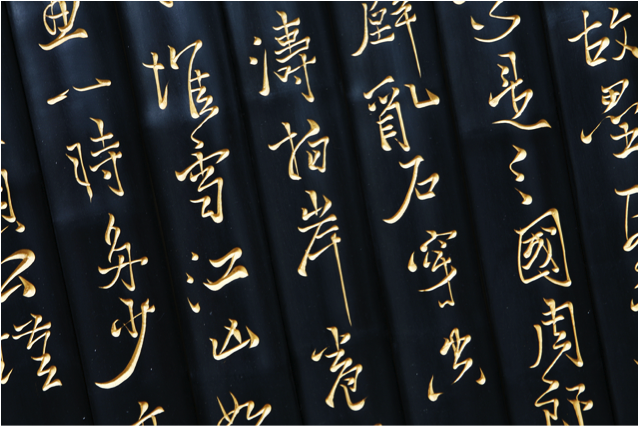Which Chinese language should one translate to?
China is a huge country of 1.4 billion people so it’s inevitable that over centuries various different languages and dialects have evolved. It also shouldn’t be forgotten that people of Chinese origin live in all corners of the Earth. Which language you choose to translate into for the Chinese market will depend on who the translation is for. If you are targeting Chinese people living in Australia or Britain it wouldn’t be feasible to translate your documents into a Chinese language as invariably Chinese people living in these two countries will be able to speak English, depending on how long they have been living in the country.
Research is necessary before choosing a Chinese language
If you are submitting documents for a work visa such as a birth certificate or academic qualifications, the chances are that Mandarin would be the language you will need for the translation as Mandarin (Putonghua) is the official language. However, overall there are other languages spoken in China that are strongly related to Mandarin. So, if you are translating marketing products for a particular area in China you should check to see what the preferred language is in that area. Mandarin Chinese is spoken by around 885 million Chinese speakers so you should also not draw any conclusions about Chinese language preference until you have thoroughly researched your market.
This is the breakdown of the spoken Chinese Languages:
- Mandarin, which is spoken mostly in mainland China
- Wu is spoken by 77 million people, who mainly reside in Shanghai, Jiangsu, Zhejiang, Jiangxi, and Anhui,
- Min is a dialect spoken by 70 million Chinese which includes speakers in Taiwan as well as Fujian, Hainan, Guangdong, Shengsi, Zhejiang, Liyang, and Jiangsu.
- Cantonese is spoken by 55 million who live in Hong Kong, Guangdong, Hainan, Macau, and Guangxi.
- Jin is a Chinese language which is spoken by 45 million people spread throughout Shanxi, Inner Mongolia, Henan, Hebei, and Shaanxi.
It’s slightly different when it comes to the written Chinese languages as the sonograms used to express the language in the written form differs between them. The languages are not based on the alphabet, but on what’s called a logographic system. This is when every character portrays a concept. There are what’s called simplified Chinese characters which are commonplace across most of China, Malaysia, and Singapore.
The traditional Chinese characters are used in Hong Kong, Taiwan and Macau. This can be quite important if you are targeting markets in different parts of China. For example, in Taipei, Traditional Chinese is the language which should be used. If your translation is to reach the population of Beijing, it should be translated into Simplified Chinese.
Who writes in Simplified Chinese and who writes in Traditional Chinese?
- Traditional Chinese: Taiwan
- Simplified Chinese: Mainland China
- Cantonese: Hong Kong, Guangdong, and Macau
This is not necessarily a clear line when it comes to the written Chinese languages as Taiwan, Hong Kong, and some other Chinese islands still use traditional Chinese character representations as well. There are of course some differences in the way traditional Chinese is presented in Hong Kong or Taiwan.
Chinese calligraphy as a writing system goes far beyond simply forming the characters on paper but it’s a highly specific written language with hidden meanings that can only be easily observed by those who communicate in this delightful representation of thoughts and ideas.
Localization and Chinese translations
You will need to ensure you have well-researched your market before asking a translator to do your translation. Getting the Chinese language wrong would be a waste of time and money. Consumers, in particular, will often only read information about a product or service if the information is clearly and correctly translated.
If you are forging a relationship with a client in Hong Kong for the importing of a product into your own country despite the fact that Chinese businesses try to learn the languages of their target markets, you have to adapt too. That means translating any contract documents which need to be signed by your Hong Kong client will need to be translated into Cantonese before you dispatch them to your client. This ensures your order requirements are correct and you work out the way you make payments for your orders to satisfy you and your client.
One thing you don’t want to get wrong at the start of a Chinese client relationship is the language which is preferable to use. You want to ensure that warranty agreements on your imported Chinese products can be shared easily with your customers in your country’s language but are also clearly understood in the language of your Chinese client.
Translators know which Chinese language is best for you
If you need to spread the word about your product to Chinese customers, consult a competent translating service who will know which Chinese language is the best. If you are setting up an agreement with a Chinese exporter you will need a translator who can translate the Chinese language used by your exporting client into your language to ensure everything about the agreement can be fully understood. Your chosen translation company can do a good translation job on your behalf.
Alexander Zeller
Latest posts by Alexander Zeller (see all)
- Which Chinese language should one translate to? - July 11, 2017



Kelly Brown
May 27, 2019 @ 7:57 pm
Very well explained on chinese translation. Keep sharing it with others to.